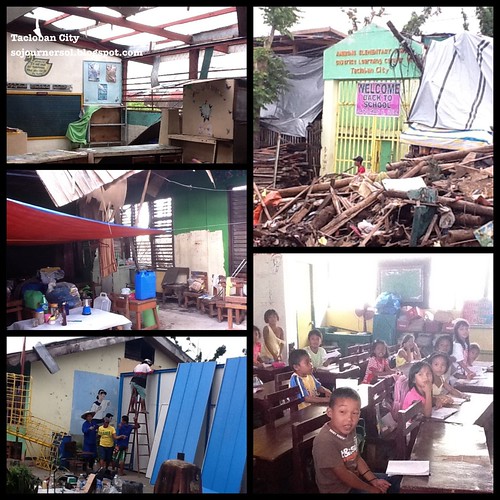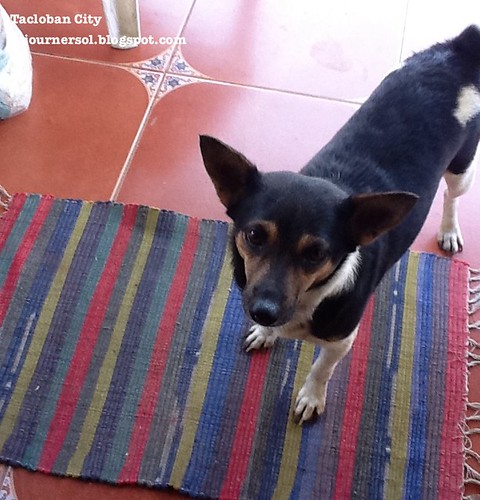It's been a hundred days since Typhoon Yolanda wreaked havoc on the coastal towns and cities in the Eastern Visayas region. People lost their loved ones, their homes, their properties, their livelihood. Things will never be the same. I will never look at Tacloban the same way again. As I tread on the city streets and highways that still reek of decay, burnt debris and dead bodies, I will remember how this place was under water, of the many lives that perished and families displaced, how at one point this hometown became ground zero. I will never forget what I saw as I came out of our house after the typhoon.
While Yolanda was the worst to hit Tacloban that is regularly visited by typhoons, it also brought out the best in humanity. Nations, international organizations, celebrities, private individuals, children and even the survivors came together to conduct relief operations, medical missions and clearing operations. And three months after, help is still on its way especially now that we are in the phase of rebuilding the Yolanda-devastated areas.
So how is life after Yolanda?
The airport is still one big waiting shed but regular flights have resumed. Electricity is limited only to the downtown area and the street lamps on major roads. It may take a while for homes to have electricity so for now, candles and lamps light up the houses. Some have solar panels and generator sets while those who don't have to troop to the LEYECO II waiting shed to have their mobile phones, lamps, flashlights, radios and even fans recharged. But those who can't make that trip to LEYECO or those who can't stand waiting for at least two hours at the waiting shed find their way into their neighbour's house to have the above items recharged for a fee, at the rate of fifteen to twenty pesos.
 |
| Some of the ships that went aground in Anibong. One ship was so close to hitting the Petron depot in Tacloban. |
Water supply is back although you can't sometimes be sure on how clean the water is so the purifying tabs really come in handy.
Those who are hooked to Kapamilya teleseryes ain't missing an episode because the FM station of ABS-CBN in Tacloban has been broadcasting the primetime bida TV programs from TV Patrol up to the last teleserye for the night.
Business is back. The grocery section of Robinsons is open but they have limited goods on sale. Meanwhile, market vendors have lined up the sidewalks and the parking slots of the major thoroughfares leading to the mercado because the market place near the port was destroyed by the typhoon, too. Every neighbourhood has its own talipapa. The prices of the produce are expensive, higher than the pre-Yolanda rates since most of the goods sold come from as far as Davao. However some of the drugstores and grocery shops have yet to open after receiving the beatings of the disaster.
PUJ and tricycles are now plying the streets and fares have returned to the normal rates. However, you could feel the dearth of PUVs because now people would rush to take the first available ride for fear that they may not be able to make it to their destination on time and before the night falls. I also observed that there are lesser jeepneys now plying the Tacloban-San Jose and Tacloban-BLISS routes, probably because the jeepneys were parked in the garages either in San Jose or Sagkahan which were under water during the typhoon.
The Astrodome has remained an evacuation center and tents have been built around it. Even the area near the airport is likewise filled with tents. It's a common sight to see houses with salvaged corrugated sheets, tarpaulins and wood overhead to keep the residents dry when it rains and shield them when it is hot.
Classes have resumed. Students and teachers are now back in their classrooms, some in rundown buildings, others in tents. Fisherfolks have yet to own a new banca as their tools of their trade were also washed away. Meanwhile, international organizations continue in helping rebuild the devastated areas. Tzu Chi Foundation has provided a cash-for-work program for the Taclobanons while a Korean organization has helped in building in classrooms.
 |
| Not just the young ones but even senior citizens signed up in helping clear the city of debris and at the same time join in the rebuilding efforts. This goes to show how much they love the city. |
Such a herculean task of rebuilding the city and towns devastated by Yolanda. But the Warays are strong and brave, never to buckle down from a humongous challenge. I know that the day will come when we will all rise above it all, standing tall and proud. Yes, Tindog Tacloban!









No comments:
Post a Comment
Thank you for visiting Traipsing Chronicles. I hope you will continue walking with me as I wander and see the world. Cheers!